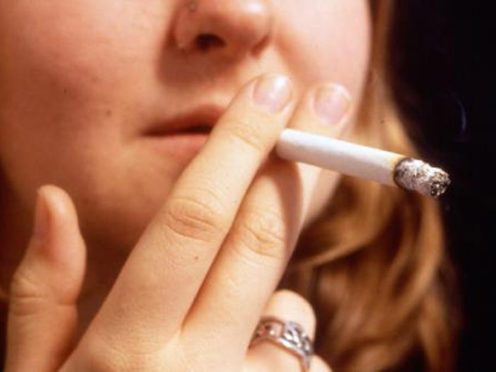Smoking tobacco may increase the risk of developing depression and schizophrenia, according to a new study.
Researchers from the University of Bristol analysed data from 462,690 people of European ancestry.
They found evidence that tobacco smoking increased the risk of depression and schizophrenia, while results also showed people with those conditions are more likely to start smoking.
The study is published in the journal Psychological Medicine on Wednesday, the same day as a report from Action on Smoking and Health (ASH).
That report calls for more to be done to help smokers with mental health conditions to stop.
Smoking killed 78,000 people in England last year and is the largest single contributor to the average 10-20 year reduction in life expectancy among people with mental health conditions, ASH states.
Dr Robyn Wootton, senior research associate in Bristol University’s School of Experimental Psychology, said: “Individuals with mental illness are often overlooked in our efforts to reduce smoking prevalence, leading to health inequalities.
“Our work shows that we should be making every effort to prevent smoking initiation and encourage smoking cessation because of the consequences to mental health as well as physical health.”
Action on Smoking and Health (ASH) said smoking rates among people with serious mental health conditions are more than 50% higher than in the general population.
Previous studies looking at this association have been unable to ascertain whether it is a cause-and-effect relationship – and if which direction if so.
The ASH report, funded by Public Health England, found that 82% of surveyed mental health trusts have a comprehensive smokefree policy in place – the Government’s target is 100%.
Of the trusts that responded to the report, all offered nicotine replacement therapy (NRT) but only 47% offered the most effective smoking treatment of either combination or varenicline.
In 55% of the trusts, patients were not always asked their smoking status on admission.
Staff accompanied patients on smoking breaks every day in 57% of the trusts despite NICE recommending no staff-supervised or staff-facilitated smoking breaks.
Ann McNeill, Professor of Tobacco Addiction and co-chair of the Mental Health and Smoking Partnership said: “Helping people with mental health conditions to quit smoking is the best way to help them live longer.
“While we have seen smoking rates fall dramatically for the population as a whole over the last four decades, we haven’t seen the same decline for people with mental health conditions.”
The University of Bristol team used UK Biobank data from 462,690 people of European ancestry, comprising of 8% current smokers and 22% former smokers.
They used an analytic approach called Mendelian randomisation, which uses genetic variants associated with an exposure, such as to smoking, to support conclusions about cause-and-effect relationships.
Earlier this year, the researchers published a study in the British Journal of Psychiatry showing evidence that tobacco smoking increases the risk of bipolar disorder.
